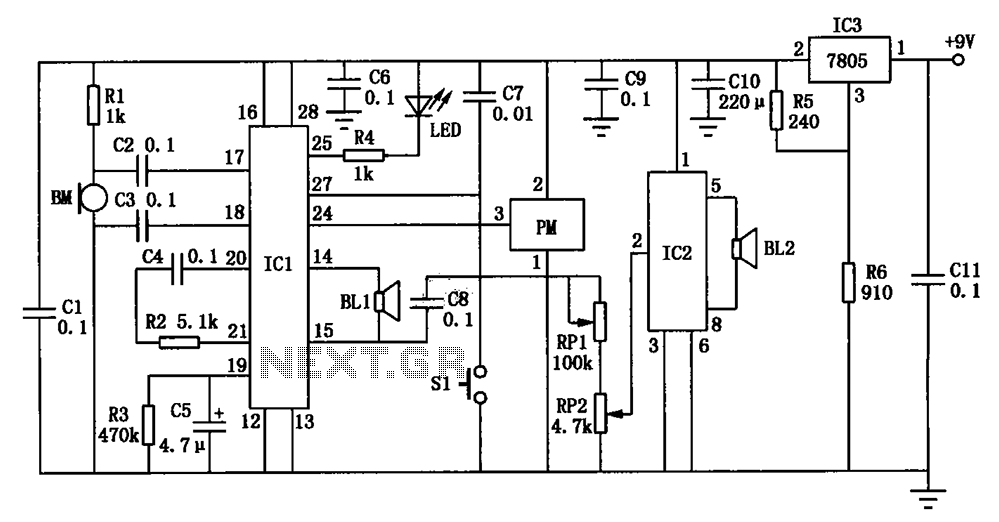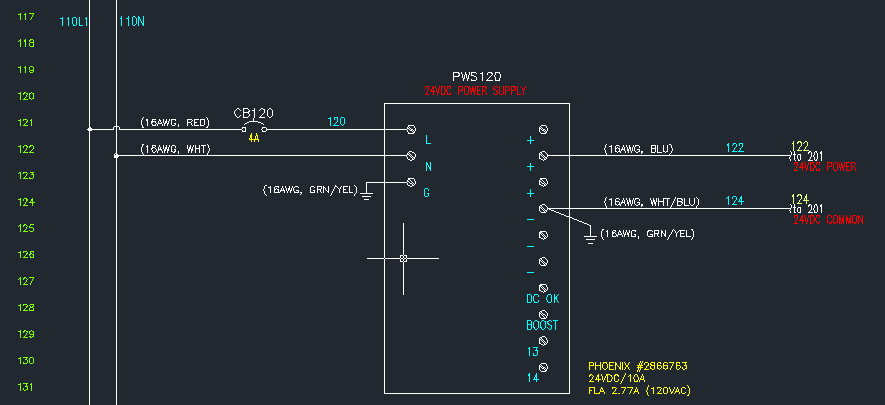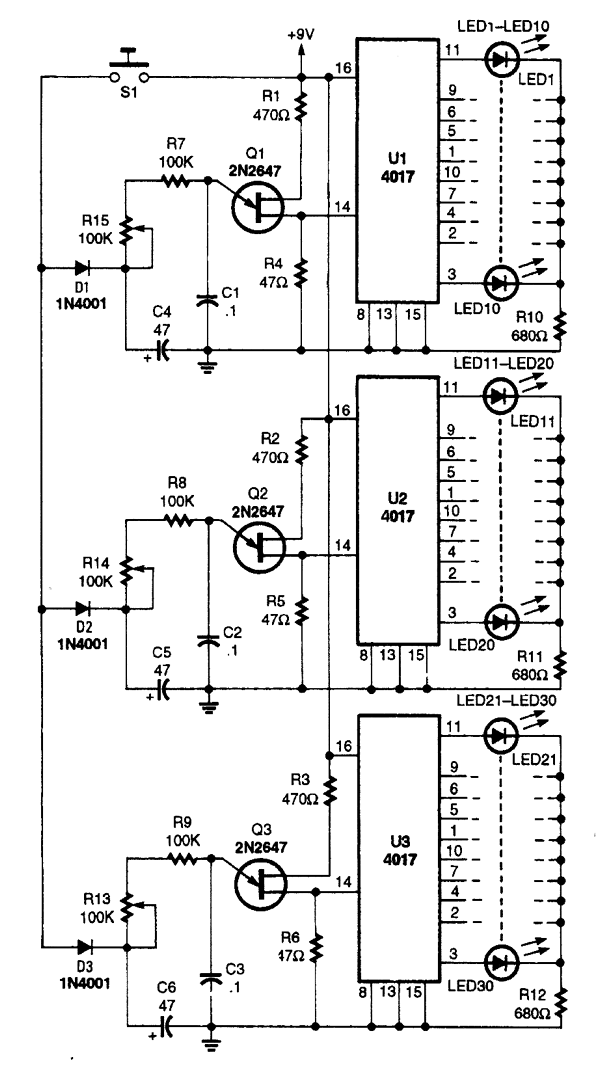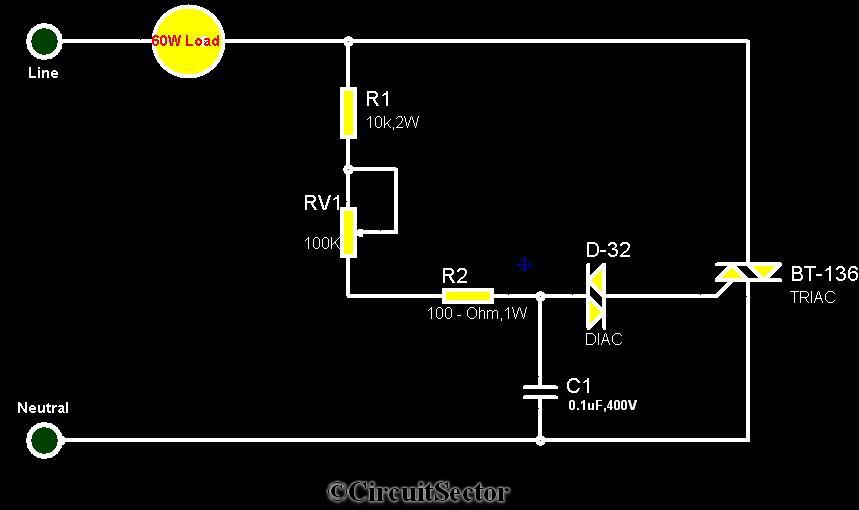
Electronic Watchdog

The electronic watchdog circuit functions similarly to a traditional guard dog, monitoring a 10-meter area around a door. When someone enters this monitored zone, the circuit emits a realistic barking sound. This sound can be sustained for 10 seconds, and if the intruder does not exit the area, the barking will cease.
The electronic watchdog circuit is designed to enhance security by simulating the presence of a dog. It typically consists of several key components, including a motion sensor, a sound module, a microcontroller, and a power supply.
The motion sensor, often an infrared (IR) or ultrasonic type, detects movement within the specified 10-meter radius. Upon detecting motion, it sends a signal to the microcontroller, which processes the input and activates the sound module. The sound module is programmed to produce a barking sound that mimics a real dog, enhancing the deterrent effect.
The microcontroller plays a crucial role in managing the operation of the circuit. It is programmed to initiate the barking sequence for a duration of 10 seconds. If the motion sensor continues to detect movement after this time, the microcontroller can be configured to either repeat the barking sound or enter a standby mode, effectively reducing power consumption when no further activity is detected.
Power supply options for the circuit may include batteries or a direct connection to an AC source, depending on the intended application and installation location. The circuit can be housed in a weatherproof enclosure for outdoor use, ensuring durability and reliability in various environmental conditions.
Overall, the electronic watchdog circuit combines advanced sensing technology with realistic sound output to create an effective security solution that can help deter unauthorized entry into a premises. As shown for the electronic watchdog circuit. It has the ability of ordinary dog guard the house. Whenever someone enters the door 10 meters monitored area, it will send out a realistic barking. Such calls can be maintained for 10 seconds, if the person does not leave, the electronic watchdog would have been called down.
The electronic watchdog circuit is designed to enhance security by simulating the presence of a dog. It typically consists of several key components, including a motion sensor, a sound module, a microcontroller, and a power supply.
The motion sensor, often an infrared (IR) or ultrasonic type, detects movement within the specified 10-meter radius. Upon detecting motion, it sends a signal to the microcontroller, which processes the input and activates the sound module. The sound module is programmed to produce a barking sound that mimics a real dog, enhancing the deterrent effect.
The microcontroller plays a crucial role in managing the operation of the circuit. It is programmed to initiate the barking sequence for a duration of 10 seconds. If the motion sensor continues to detect movement after this time, the microcontroller can be configured to either repeat the barking sound or enter a standby mode, effectively reducing power consumption when no further activity is detected.
Power supply options for the circuit may include batteries or a direct connection to an AC source, depending on the intended application and installation location. The circuit can be housed in a weatherproof enclosure for outdoor use, ensuring durability and reliability in various environmental conditions.
Overall, the electronic watchdog circuit combines advanced sensing technology with realistic sound output to create an effective security solution that can help deter unauthorized entry into a premises. As shown for the electronic watchdog circuit. It has the ability of ordinary dog guard the house. Whenever someone enters the door 10 meters monitored area, it will send out a realistic barking. Such calls can be maintained for 10 seconds, if the person does not leave, the electronic watchdog would have been called down.
Warning: include(partials/cookie-banner.php): Failed to open stream: Permission denied in /var/www/html/nextgr/view-circuit.php on line 713
Warning: include(): Failed opening 'partials/cookie-banner.php' for inclusion (include_path='.:/usr/share/php') in /var/www/html/nextgr/view-circuit.php on line 713





